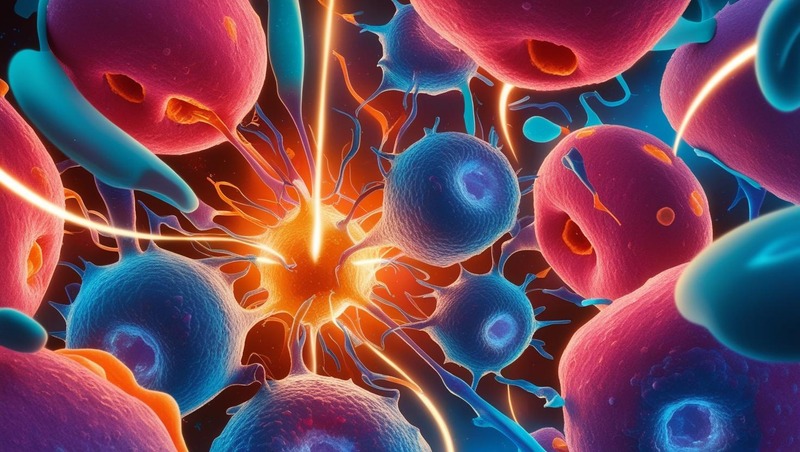Filters
Host (768597)
Bovine (1090)Canine (20)Cat (408)Chicken (1642)Cod (2)Cow (333)Crab (15)Dog (524)Dolphin (2)Duck (13)E Coli (239129)Equine (7)Feline (1864)Ferret (306)Fish (125)Frog (55)Goat (36847)Guinea Pig (752)Hamster (1376)Horse (903)Insect (2053)Mammalian (512)Mice (6)Monkey (601)Mouse (96266)Pig (197)Porcine (70)Rabbit (358709)Rat (11723)Ray (55)Salamander (4)Salmon (15)Shark (3)Sheep (4247)Snake (4)Swine (301)Turkey (57)Whale (3)Yeast (5336)Zebrafish (3022)Isotype (156643)
IgA (13624)IgA1 (941)IgA2 (318)IgD (1949)IgE (5594)IgG (87187)IgG1 (16733)IgG2 (1329)IgG3 (2719)IgG4 (1689)IgM (22029)IgY (2531)Label (239340)
AF488 (2465)AF594 (662)AF647 (2324)ALEXA (11546)ALEXA FLUOR 350 (255)ALEXA FLUOR 405 (260)ALEXA FLUOR 488 (672)ALEXA FLUOR 532 (260)ALEXA FLUOR 555 (274)ALEXA FLUOR 568 (253)ALEXA FLUOR 594 (299)ALEXA FLUOR 633 (262)ALEXA FLUOR 647 (607)ALEXA FLUOR 660 (252)ALEXA FLUOR 680 (422)ALEXA FLUOR 700 (2)ALEXA FLUOR 750 (414)ALEXA FLUOR 790 (215)Alkaline Phosphatase (825)Allophycocyanin (32)ALP (387)AMCA (80)AP (1160)APC (15217)APC C750 (13)Apc Cy7 (1248)ATTO 390 (3)ATTO 488 (6)ATTO 550 (1)ATTO 594 (5)ATTO 647N (4)AVI (53)Beads (225)Beta Gal (2)BgG (1)BIMA (6)Biotin (27817)Biotinylated (1810)Blue (708)BSA (878)BTG (46)C Terminal (688)CF Blue (19)Colloidal (22)Conjugated (29246)Cy (163)Cy3 (390)Cy5 (2041)Cy5 5 (2469)Cy5 PE (1)Cy7 (3638)Dual (170)DY549 (3)DY649 (3)Dye (1)DyLight (1430)DyLight 405 (7)DyLight 488 (216)DyLight 549 (17)DyLight 594 (84)DyLight 649 (3)DyLight 650 (35)DyLight 680 (17)DyLight 800 (21)Fam (5)Fc Tag (8)FITC (30165)Flag (208)Fluorescent (146)GFP (563)GFP Tag (164)Glucose Oxidase (59)Gold (511)Green (580)GST (711)GST Tag (315)HA Tag (430)His (619)His Tag (492)Horseradish (550)HRP (12960)HSA (249)iFluor (16571)Isoform b (31)KLH (88)Luciferase (105)Magnetic (254)MBP (338)MBP Tag (87)Myc Tag (398)OC 515 (1)Orange (78)OVA (104)Pacific Blue (213)Particle (64)PE (33571)PerCP (8438)Peroxidase (1380)POD (11)Poly Hrp (92)Poly Hrp40 (13)Poly Hrp80 (3)Puro (32)Red (2440)RFP Tag (63)Rhodamine (607)RPE (910)S Tag (194)SCF (184)SPRD (351)Streptavidin (55)SureLight (77)T7 Tag (97)Tag (4710)Texas (1249)Texas Red (1231)Triple (10)TRITC (1401)TRX tag (87)Unconjugated (2110)Unlabeled (218)Yellow (84)Pathogen (489613)
Adenovirus (8665)AIV (315)Bordetella (25035)Borrelia (18281)Candida (17817)Chikungunya (638)Chlamydia (17650)CMV (121394)Coronavirus (5948)Coxsackie (854)Dengue (2868)EBV (1510)Echovirus (215)Enterovirus (677)Hantavirus (254)HAV (905)HBV (2095)HHV (873)HIV (7865)hMPV (300)HSV (2356)HTLV (634)Influenza (22132)Isolate (1208)KSHV (396)Lentivirus (3755)Lineage (3025)Lysate (127759)Marek (93)Measles (1163)Parainfluenza (1681)Poliovirus (3030)Poxvirus (74)Rabies (1519)Reovirus (527)Retrovirus (1069)Rhinovirus (507)Rotavirus (5346)RSV (1781)Rubella (1070)SIV (277)Strain (67790)Vaccinia (7233)VZV (666)WNV (363)Species (2982223)
Alligator (10)Bovine (159546)Canine (120648)Cat (13082)Chicken (113771)Cod (1)Cow (2030)Dog (12745)Dolphin (21)Duck (9567)Equine (2004)Feline (996)Ferret (259)Fish (12797)Frog (1)Goat (90451)Guinea Pig (87888)Hamster (36959)Horse (41226)Human (955186)Insect (653)Lemur (119)Lizard (24)Monkey (110914)Mouse (470743)Pig (26204)Porcine (131703)Rabbit (127597)Rat (347841)Ray (442)Salmon (348)Seal (8)Shark (29)Sheep (104984)Snake (12)Swine (511)Toad (4)Turkey (244)Turtle (75)Whale (45)Zebrafish (535)Technique (5597646)
Activation (170393)Activity (10733)Affinity (44631)Agarose (2604)Aggregation (199)Antigen (135358)Apoptosis (27447)Array (2022)Blocking (71767)Blood (8528)Blot (10966)ChiP (815)Chromatin (6286)Colorimetric (9913)Control (80065)Culture (3218)Cytometry (5481)Depletion (54)DNA (172449)Dot (233)EIA (1039)Electron (6275)Electrophoresis (254)Elispot (1294)Enzymes (52671)Exosome (4280)Extract (1090)Fab (2230)FACS (43)FC (80929)Flow (6666)Fluorometric (1407)Formalin (97)Frozen (2671)Functional (708)Gel (2484)HTS (136)IF (12906)IHC (16566)Immunoassay (1589)Immunofluorescence (4119)Immunohistochemistry (72)Immunoprecipitation (68)intracellular (5602)IP (2840)iPSC (259)Isotype (8791)Lateral (1585)Lenti (319416)Light (37250)Microarray (47)MicroRNA (4834)Microscopy (52)miRNA (88044)Monoclonal (516109)Multi (3844)Multiplex (302)Negative (4261)PAGE (2520)Panel (1520)Paraffin (2587)PBS (20270)PCR (9)Peptide (276160)PerCP (13759)Polyclonal (2762994)Positive (6335)Precipitation (61)Premix (130)Primers (3467)Probe (2627)Profile (229)Pure (7808)Purification (15)Purified (78305)Real Time (3042)Resin (2955)Reverse (2435)RIA (460)RNAi (17)Rox (1022)RT PCR (6608)Sample (2667)SDS (1527)Section (2895)Separation (86)Sequencing (122)Shift (22)siRNA (319447)Standard (42468)Sterile (10170)Strip (1863)Taq (2)Tip (1176)Tissue (42812)Tube (3306)Vitro (3577)Vivo (981)WB (2515)Western Blot (10683)Tissue (2015946)
Adenocarcinoma (1075)Adipose (3459)Adrenal (657)Adult (4883)Amniotic (65)Animal (2447)Aorta (436)Appendix (89)Array (2022)Ascites (4377)Bile Duct (20)Bladder (1672)Blood (8528)Bone (27330)Brain (31189)Breast (10917)Calvaria (28)Carcinoma (13493)cDNA (58547)Cell (413805)Cellular (9357)Cerebellum (700)Cervix (232)Child (1)Choroid (19)Colon (3911)Connective (3601)Contaminant (3)Control (80065)Cord (661)Corpus (148)Cortex (698)Dendritic (1849)Diseased (265)Donor (1360)Duct (861)Duodenum (643)Embryo (425)Embryonic (4583)Endometrium (463)Endothelium (1424)Epidermis (166)Epithelium (4221)Esophagus (716)Exosome (4280)Eye (2033)Female (475)Frozen (2671)Gallbladder (155)Genital (5)Gland (3436)Granulocyte (8981)Heart (6850)Hela (413)Hippocampus (325)Histiocytic (74)Ileum (201)Insect (4880)Intestine (1944)Isolate (1208)Jejunum (175)Kidney (8075)Langerhans (283)Leukemia (21541)Liver (17340)Lobe (835)Lung (6064)Lymph (1208)Lymphatic (639)lymphocyte (22572)Lymphoma (12782)Lysate (127759)Lysosome (2813)Macrophage (31794)Male (1617)Malignant (1465)Mammary (1985)Mantle (1042)Marrow (2210)Mastocytoma (3)Matched (11710)Medulla (156)Melanoma (15522)Membrane (105772)Metastatic (3574)Mitochondrial (160319)Muscle (37419)Myeloma (748)Myocardium (11)Nerve (6398)Neuronal (17028)Node (1206)Normal (9486)Omentum (10)Ovarian (2509)Ovary (1172)Pair (47185)Pancreas (2843)Panel (1520)Penis (64)Peripheral (1912)Pharynx (122)Pituitary (5411)Placenta (4038)Prostate (9423)Proximal (318)Rectum (316)Region (202210)Retina (956)Salivary (3119)Sarcoma (6946)Section (2895)Serum (24880)Set (167654)Skeletal (13628)Skin (1879)Smooth (7577)Spinal (424)Spleen (2292)Stem (8892)Stomach (925)Stroma (49)Subcutaneous (47)Testis (15393)Thalamus (127)Thoracic (60)Throat (40)Thymus (2986)Thyroid (14121)Tongue (140)Total (10135)Trachea (227)Transformed (175)Tubule (48)Tumor (76921)Umbilical (208)Ureter (73)Urinary (2466)Uterine (303)Uterus (414)Cellular Reprogramming: Transforming Medicine and Science for the Future
Cellular reprogramming is one of the most innovative breakthroughs in modern biology. It refers to the process of converting specialized, differentiated cells back into a pluripotent state, essentially ‘resetting’ them to a stage where they can differentiate into various cell types. This advancement has opened new doors for understanding human diseases, advancing regenerative medicine, and creating personalized therapies.
Genprice
Scientific Publications

Cellular Reprogramming: Transforming Medicine and Science for the Future
What is Cellular Reprogramming ?
Cellular reprogramming is a scientific technique used to revert a mature, differentiated cell (such as a skin or blood cell) back to a pluripotent state. This pluripotent cell has the ability to transform into any other type of cell in the body, similar to an embryonic stem cell. This reprogramming process is initiated by introducing specific transcription factors or reprogramming genes into the somatic cell. The most famous of these factors are the Yamanaka factors: Oct4, Sox2, Klf4, and c-Myc, which are essential for generating induced pluripotent stem cells (iPSCs). Pubmed
Types of Cellular Reprogramming
1. Induced Pluripotent Stem Cells (iPSCs)
Induced pluripotent stem cells (iPSCs) are one of the most revolutionary products of cellular reprogramming. These cells are created by introducing a set of four genes into somatic cells, which causes the cells to revert to a pluripotent state. iPSCs are significant because they offer the potential for creating personalized therapies, disease models, and regenerative treatments without the ethical concerns associated with embryonic stem cells. Pubmed
- Applications of iPSCs in Medicine
iPSCs are being used to study diseases, develop new drug therapies, and even generate cells for tissue repair. In medicine, iPSCs hold the promise of personalized medicine, where cells derived from a patient can be used to create treatments tailored specifically to that individual. iPSCs have already been used in clinical trials to treat macular degeneration and other degenerative diseases. Pubmed
2. Somatic Cell Nuclear Transfer (SCNT)
Somatic cell nuclear transfer (SCNT) is a form of cellular reprogramming in which the nucleus of a somatic cell (a non-reproductive cell) is transferred into an enucleated egg cell. This process essentially ‘reprograms’ the somatic cell back to an embryonic-like state, capable of differentiating into various cell types. Although SCNT has been mainly used in animal cloning, it has potential applications in regenerative medicine, such as creating genetically identical cells for therapeutic use. Pubmed
- Challenges of SCNT in Human Therapy
While SCNT holds great potential, there are ethical concerns regarding its application in humans. Cloning humans or creating embryos for research purposes remains a highly controversial issue. However, the technology is still being explored for its potential in creating genetically identical cells for personalized medicine.
3. Direct Reprogramming (Transdifferentiation)
Direct reprogramming, or transdifferentiation, is an alternative to iPSC generation where a somatic cell is directly converted into a different cell type without passing through a pluripotent intermediate. This is a faster process than generating iPSCs and eliminates the potential risk of teratoma formation, which is a concern with pluripotent cells. Pubmed
- Direct Reprogramming for Tissue Regeneration
Transdifferentiation has enormous potential in the field of tissue regeneration. By directly converting one cell type into another (e.g., turning fibroblasts into neurons or heart muscle cells), this technique can help replace damaged tissues more efficiently, without the need to generate pluripotent stem cells. Researchers are already investigating the use of direct reprogramming for heart repair, brain tissue regeneration, and more.
Applications of Cellular Reprogramming in Medicine
1. Regenerative Medicine: Repairing Damaged Tissues
One of the most promising applications of cellular reprogramming is in regenerative medicine. The ability to generate pluripotent or specialized cells from a patient’s own tissue provides a novel way to repair or replace damaged organs and tissues. This could offer new hope for patients suffering from conditions like heart disease, diabetes, spinal cord injuries, and neurodegenerative disorders.Pubmed
- Personalized Regenerative Therapies
Using iPSCs derived from a patient's own cells ensures that the cells used in therapies are immune-compatible, reducing the risk of rejection. This personalization is a breakthrough for patients who previously had to rely on donor organs or tissues, which carry the risk of rejection and are in short supply.
2. Disease Modeling
Cellular reprogramming allows researchers to create disease models that closely mimic human diseases. By reprogramming cells from patients with specific conditions, researchers can observe how diseases develop in vitro, and evaluate how a patient might respond to a new treatment. Pubmed
3. Gene Editing and Gene Therapy
Gene editing technologies, such as CRISPR-Cas9, have been paired with cellular reprogramming to correct genetic defects in reprogrammed cells. By using gene editing techniques, researchers can not only reprogram cells but also correct mutations in the genome, offering potential cures for genetic disorders.
- Correcting Genetic Diseases
In the future, gene editing and cellular reprogramming may be used to directly correct genetic diseases, such as sickle cell anemia, cystic fibrosis, and Duchenne muscular dystrophy. This could provide a permanent cure for these conditions by correcting the genetic defect at the cellular level.
Challenges and Limitations of Cellular Reprogramming
1. Low Efficiency and Tumorigenic Risk
Despite the potential of cellular reprogramming, the process remains inefficient, and only a small percentage of reprogrammed cells are successful. Moreover, pluripotent cells, especially iPSCs, have the potential to form tumors (teratomas) when transplanted into patients, which poses significant challenges for their clinical use. Pubmed
- Improving Efficiency and Safety
To address these concerns, researchers are working on improving the reprogramming efficiency and enhancing the safety of the cells generated. New methods, such as using small molecules to enhance reprogramming or epigenetic reprogramming, are being explored to make the process more effective and safer.
2. Ethical and Regulatory Issues
Ethical issues surrounding cellular reprogramming, particularly with SCNT and gene editing, have raised concerns. While iPSC technology has fewer ethical challenges, the potential for cloning and genetic manipulation remains a point of contention. Regulatory frameworks are still being developed to ensure the safe and ethical application of these technologies in humans.
Recent Advances in Cellular Reprogramming
1. CRISPR and Gene Editing Enhancements
The use of CRISPR-Cas9 gene editing technology has significantly improved the precision of cellular reprogramming. Researchers can now make targeted genetic changes in reprogrammed cells, allowing for the correction of mutations, the enhancement of reprogramming efficiency, and the creation of more accurate disease models. Pubmed
2. Epigenetic Reprogramming
Epigenetic reprogramming is a newer technique that focuses on modifying the epigenome (the chemical modifications that regulate gene expression) rather than the genetic code. This approach holds promise for more efficient reprogramming, as it avoids the use of potentially oncogenic reprogramming factors and could be a safer alternative for generating pluripotent cells. Pubmed
The Future of Cellular Reprogramming: What’s Next?
1. Full Organ Regeneration
The ultimate goal of cellular reprogramming is to enable the regeneration of entire organs. Research is underway to create fully functional organs from iPSCs and other reprogrammed cells. This could drastically change the landscape of organ transplantation, providing an unlimited source of organs that are perfectly matched to the recipient.
2. Clinical Application of Reprogrammed Cells
As the technology continues to mature, we can expect the clinical application of reprogrammed cells to become more widespread. We may soon see more therapies that involve regenerating tissues, curing genetic diseases, or even replacing damaged organs, transforming the way we treat many diseases and conditions.
Tags
- Biology
- LifeSciences
- Genprice
- Genetics
- Genomics
- MolecularBiology
- CRISPR
- DNA
- Research
- StemCells
- CellularReprogramming
